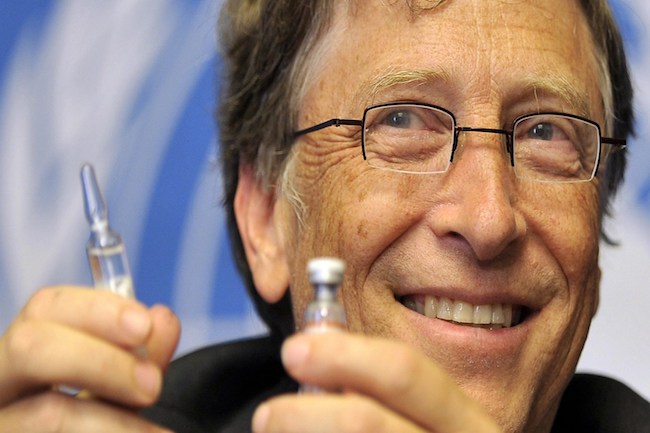Deconstructing Bill Gates’ Agenda by Dr. Joseph Mercola for Mercola
In “How Bill Gates Monopolized Global Health,” I featured Parts 1 and 2 of investigative journalist James Corbett’s report on this unelected global health czar.
Part 1 reviewed how Gates ended up in a position to monopolize global health, despite his lack of health or medical education. In Part 2, he laid out Gates’ plan to vaccinate the global population against COVID-19 (although there’s no reason to imagine the plan would remain limited to a single vaccine).
Here, in Parts 3 and 4, which you’ll find in the playlist above, Corbett dives into the motives, ideology and connections of Gates that appear to have shaped and are driving his post-COVID-19 plans for the world — plans that include an unprecedented campaign to control the global population in its totality, from cradle to grave.
Population Control Is a Chief Aim
As noted by Corbett, Gates has used his staggering wealth to buy control, and he’s done it under the cloak of “charity.” A significant piece of that control is the control over population growth.
Indeed, a meeting1 in May 2009 between Sir Paul Nurse, then-president of Rockefeller University, Warren Buffet, David Rockefeller Jr., George Soros, New York Mayor Michael Bloomberg, Ted Turner and Oprah Winfrey, revolved around how these billionaires could use their wealth to curb population growth — without the input or interference of government agencies.
According to an article2 in The Sunday Times, they met at the request of Gates to discuss “joining forces to overcome political and religious obstacles to change.” The article continues:
“Stacy Palmer, editor of the Chronicle of Philanthropy, said the summit was unprecedented. ‘We only learnt about it afterwards, by accident. Normally these people are happy to talk good causes, but this is different — maybe because they don’t want to be seen as a global cabal,’ he said … Taking their cue from Gates they agreed that overpopulation was a priority …
Another guest said there was ‘nothing as crude as a vote’ but a consensus emerged that they would back a strategy in which population growth would be tackled as a potentially disastrous environmental, social and industrial threat … ‘They need to be independent of government agencies, which are unable to head off the disaster we all see looming.’”
According to Gates, the global population could be lowered by 10% to 15% if we “do a really great job on new vaccines, health care [and] reproductive health services.” His theory is that “as health improves, families choose to have less children … As you improve health, within a half generation the population growth rate goes down.”
Vaccines to Reduce Fertility
Alas, as Corbett notes,3 “the idea of using vaccines as sterilization agents — even without the public’s knowledge or consent — is not conspiracy lore, but documentable fact.”
He points out an excerpt from the Rockefeller Foundation’s 1968 annual report4 and five-year review, which under the heading “Problems of Population,” states that “very little work is in progress on immunological methods, such as vaccines, to reduce fertility, and much more research is required if a solution is to be found here.”
To address the problem, the Rockefeller Foundation vowed to solicit and fund “established and beginning investigators to turn their attention to aspects of research in reproductive biology that have implications for human fertility and its control.”
In 1972, the Rockefeller-funded Population Council joined forces with the World Health Organization, creating the Task Force on Vaccines for Fertility Regulation, and in 1995, the task force reported they had developed a prototype of an anti-hCG vaccine that would prevent women from carrying a baby to term.
In the early 1990s, “a series of scandals over WHO-led vaccination programs in the Third World led to allegations that tetanus vaccines in places like the Philippines5 and Kenya6 were being laced with hCG in order to implement population control by stealth,” Corbett says. The subsequent controversy chilled campaigns promoting population control via vaccines.
The Bill & Melinda Gates Foundation revived the concept during its 2012 Summit on Family Planning in London, when it was announced the foundation will fund research, development and deployment of “injectable contraceptives,” aimed at the developing world.
“But the Gates were not content to stop there,” Corbett says. “In 2014 it was announced that Microchips Biotech, Inc., a company in Lexington, Massachusetts, had developed a new form of birth control: ‘a wireless implant that can be turned on and off with a remote control and that is designed to last up to 16 years.’
According to MIT Technology Review, the idea originated when Bill Gates visited Robert Langer’s MIT lab in 2012 and asked him if it would be possible to create an implantable birth control device that could be turned on or off remotely.
Langer referred Gates to the controlled release microchip technology he had invented and licensed to MicroCHIPS Biotechnology, and the Gates Foundation granted $20 million to the firm to develop the implants.
Reducing population growth has, by Gates’ own admission, been a core mission of the Gates Foundation since its inception. But in order to really understand what Gates means by ‘population control,’ we have to look beyond the concept of controlling population size. At its most fundamental level, the ‘population control’ that Gates speaks of is not birth control, but control of the population itself.”




